Project 4 — E/R Diagrams
SOLUTIONS
Moonlight Café—Receipt (25 points)
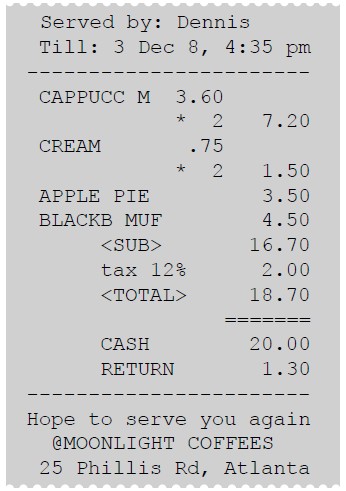
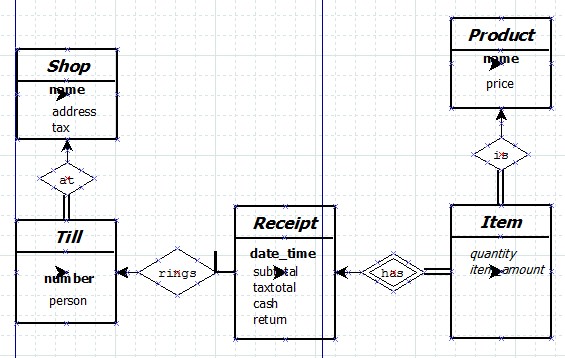
Relations
Shop(name, address, tax)
Till(number, person, shop_name(+) )
Receipt(date_time, subtotal, taxtotal, cash, return, till_number(+) )
Item(receipt_date_time(+), quantity, product_name(+) )
Product(name, price)
Functional Dependencies
Shop name => address, tax
Till number => person, shop_name
Receipt date_time => subtotal, taxtotal, cash, return, till_number
Item receipt_date_time, quantity =>product_name
Product name => price
Moonlight Café—Price List (25 points)
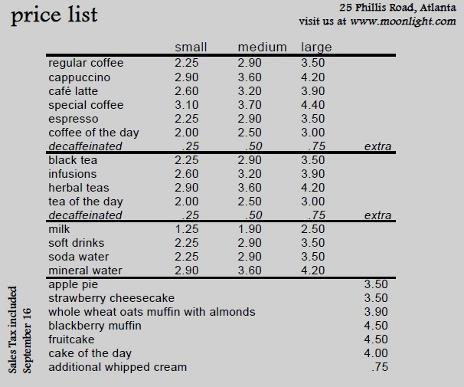
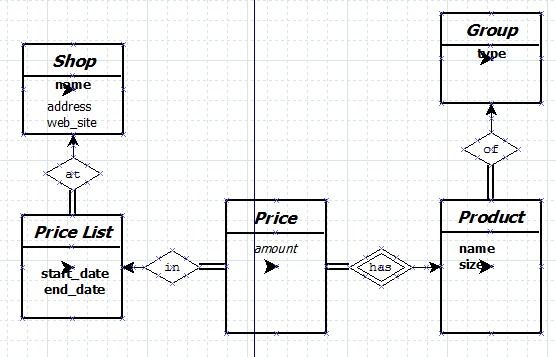
Relations
Shop(name, address, web_site)
Price_list(start_date, end_date, shop_name(+) )
Price(product_name(+), product_size(+), amount )
Product( name, size, type(+) )
Group(type)
Functional Dependencies
Shop name => address, web_site
Price_list start_date, end_date => shop_name
Price product_name, product_size => amount
Product name, size => type
Mulch Dispatch and Delivery System (50 points)
Mulch Delivery and Dispatch System Description
Mulch Order Data
Mulch Order Reports
Student Questions and Clarifications
DESIGN
1. List all functional dependencies and constraints that you see in the system
2. Build an ER diagram to include all database structures to support the functional requirements
3. Reduce the diagram to relation schemas
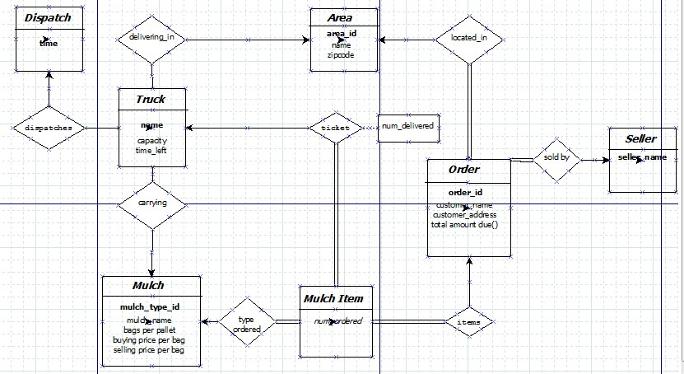
Clock( time )
Area( area_id , name, zipcode)
Truck( name, capacity, time_left, area_id(+), mulch_type_id(+) )
Mulch( mulch_type_id, mulch_name, bags_per_pallet, buying_price_per_bag, selling_price_per_bag )
Order(order_id, customer_name, customer_address, total_amount_due, area_id(+), seller_name(+) )
Mulch_Item( order_id(+), mulch_type_id(+), num_ordered )
Seller( seller_name )
Area area_id => name, zipcode
Truck name => capacity, time_left, area_id, mulch_type_id
Mulch mulch_type_id => mulch_name, bags_per_pallet, buying_price_per_bag, selling_price_per_bag
Order order_id => customer_name, customer_address, total_amount_due, area_id, seller_name
Mulch_Item order_id, mulch_type_id => num_ordered




